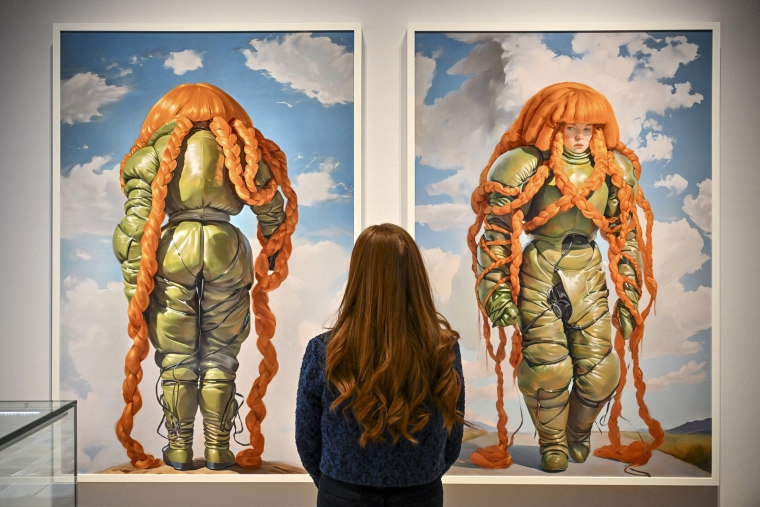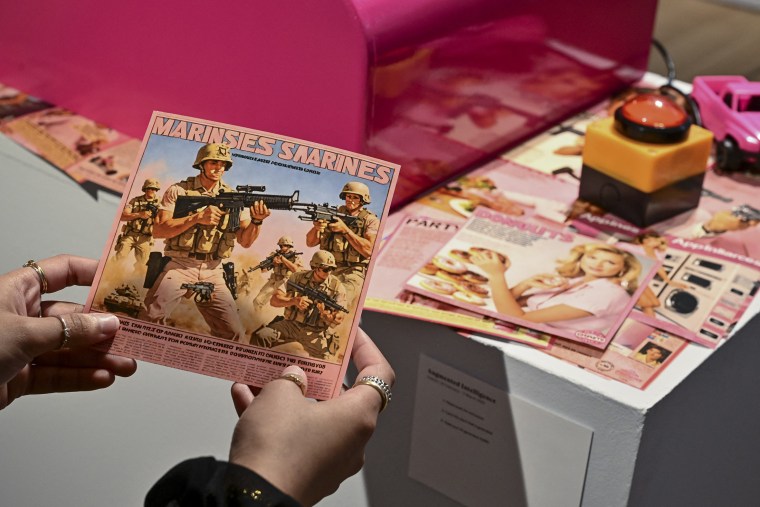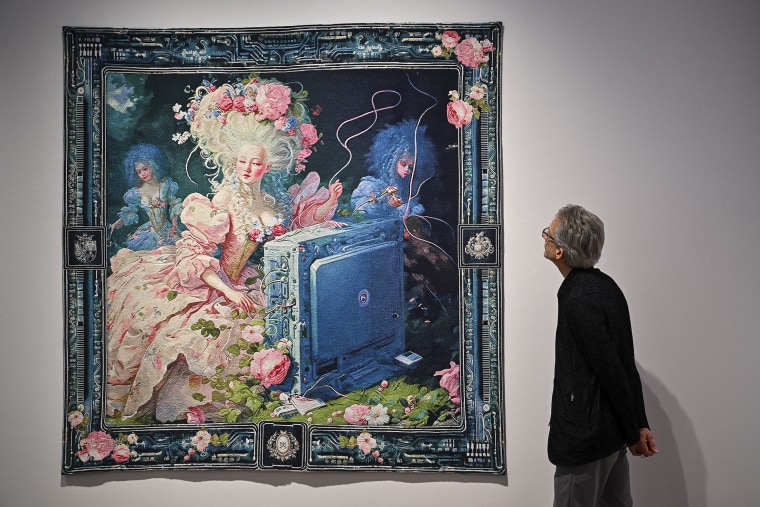In Christie’s New York gallery, a robot is painting a 10-by-12-foot canvas. It adds more oil paint each time a $100 bid is placed on it. But its creative vision doesn’t come from the artist who programmed it.
It comes from a technique called outpainting, which employs artificial intelligence to generate elements that blend with existing content on a canvas. It’s just one method used by the 34 works in Christie’s latest venture: the first major auction that exclusively features art made using AI.
“We’ve seen throughout time that there’s a lot of artistry in working with mechanical means for creating artwork, " said artist and roboticist Alexander Reben, whose aforementioned painting is up for bidding. "And I think what really matters is your intention and what you do."
The auction house — known for selling fine art, luxury goods, and antiques — opened “Augmented Intelligence” on Feb. 20. The sale has raked in hundreds of thousands of dollars in bids.
But not everyone is pleased with those results.
“Many of the artworks you plan to auction were created using AI models that are known to be trained on copyrighted work without a license,” states an open letter addressed to Christie’s signed by more than 6,400 artists.
The letter called for the auction to be cancelled. Reid Southen, who helped organize the letter, said he believes a third of the works featured use generative AI models trained on copyrighted works. He named Midjourney, Open AI’s Sora, Runway AI and Stable Diffusion as examples.

“Christie’s can hold themselves accountable to a higher standard and engage with these things in a way that is supportive of artists as a whole, and doesn’t package these exploitative models into their auction alongside people that are doing things ethically,” Southen said.
Southen, a Michigan-based film industry concept artist, said he and many of his peers have lost work and had their income “slashed in half” over the past two years due to AI.
Art isn’t the only industry bracing for change. According to a World Economic Forum report released last month, 41% of employers expect to downsize their workforce as AI begins to replicate roles. Sixty-nine percent said they plan to recruit talent skilled in AI tool design and enhancement.
But Christie’s sees AI as a natural progression in art history. Nicole Sales Giles, Christie’s director of digital art, said she welcomes debate around the auction as a sign that AI will transform art to the industry’s benefit.
“I’m not a copyright lawyer, so I can’t comment on the legality, but from a theft-influence angle, artists have been influenced by other artists for centuries,” Sales Giles said.
Many of the artists featured in the auction used their own data — including personal photography, curated collages and their own poetry — to train their AI models.
“The AI I’ve been using for almost 10 years was not trained on other artists’ work,” said digital artist Daniel Ambrosi, whose work is part of the auction. “It was not even created to make art in the first place.”
Ambrosi fed his photography of Central Park into Google’s DeepDream at two different scales. The AI recognizes the image and moves pixels around in hallucinogenic ways.
“It’s like I’m the leader of a jazz band,” he said. “I write original compositions, and I have this virtuoso saxophonist who knows where I’m going with the song, but is going to improvise, surprise and delight me.”

But even if an artist is using their own work as an input, it doesn’t guarantee that the AI model they are using was not built on data that contains copyrighted works.
On Feb. 12, Thomson Reuters won a copyright battle against a legal research firm that used its materials to train an AI model without permission. That ruling said tech companies used data sets with large amounts of human writing to train AI chatbots without compensating those who wrote the original works.
Developer OpenAI wrote in a U.K. filing last year that it would be “impossible” to train top AI models without copyrighted works. The company’s website stated that using publicly available internet materials to train AI models is fair use under U.S. copyright law.

According to Reben, AI models pull from such large datasets that it’s difficult to find an individual’s work. As OpenAI’s first artist in residence, Reben worked extensively with beta AI technologies for making art. Now, he’s an artist in residence Meta. He said it comes down to the artist to assess what is fair use.
“Using other works to create new works is part of history,” Reben said. “Creating things which change expression, which move the idea forward, is an exception in copyright law.”
But even if AI is set to become part of the fine art world, Southen said it should be integrated ethically. That means holding AI companies accountable to licensing data they extract value from, and compensating artists fairly. Until then, he said, it’s time for Christie’s to “pump the brakes.”
